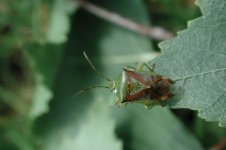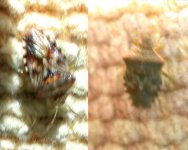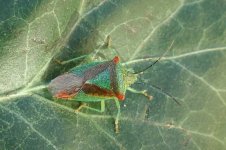steve covey
Jack of all Orders - Master of None
Perhaps they meant that this looks like the first genuine migrant as opposed to 'veg assisted'harry eales said:Hello Steve,
There are, I understand, recent records of this cracking Shieldbug from Kent and Sussex, I even have a specimen in my own collection which was found in Co.Durham. (a suspected accidental import).
It is likely, that like the Southern Green Shieldbug N.viridula it has been present for a year or two or more, but hasn't been detected simply because there are far to few people interested in seeking them out.
Just today I received from the National Recorder of Hemiptera a VC listing of where Pentatomid Shieldbugs have been recorded. This shows post 1960 records from 3 VC's these are:- 9 Dorset, 14 E.Sussex and 27 E.Norfolk. This list a preliminary one, but it is also the most recent.
It would seem, that at least on Bird Forum, The 'Shieldbug Thread' has encouraged some people to photgraph and post the pictures for identification, so at least these bugs are getting some publicity nowadays.
Thanks for the info,
Regards,
Harry
Regarding generating interest; the recent publication of a couple of decent field guides will help [as did Hammond's Dragonfly Guide for odonata in the 80's]Also the advent of digital cameras I think encourages people to 'record' what they see out of curiosity in the knowledge they aren't 'wasting' film on subjects other than their main interest. These can then be posted to special interest groups such as ours and various yahoo groups. There is such a lot of negative talk about the internet that it's nice to cite this situation where it is positively beneficial :clap:
Apparently this is another species that feed on various brassicas so ought to spread as long as the climate suits it. David Slade was stated as the finder - do you know of him Harry?












